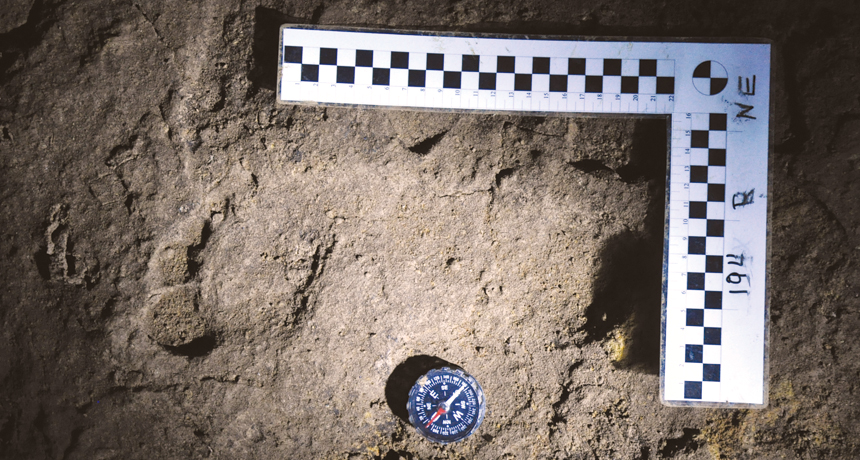Romanian cave holds some of the oldest human footprints
Preserved Stone Age impressions were made about 20,000 years earlier than thought

GOOD IMPRESSION Human footprints such as this, found in a Romanian cave almost 50 years ago, are much older than originally thought, dating to around 36,500 years ago, a new study finds.
D. Webb







